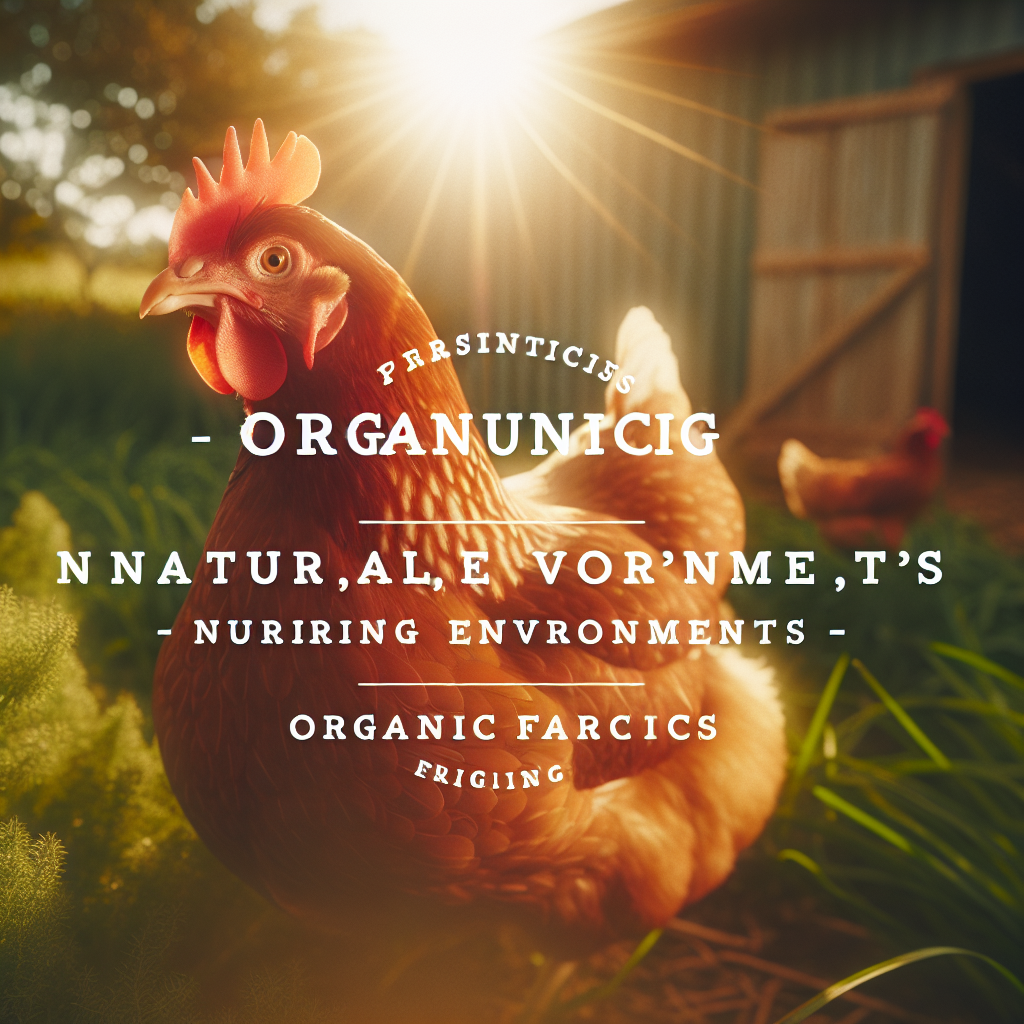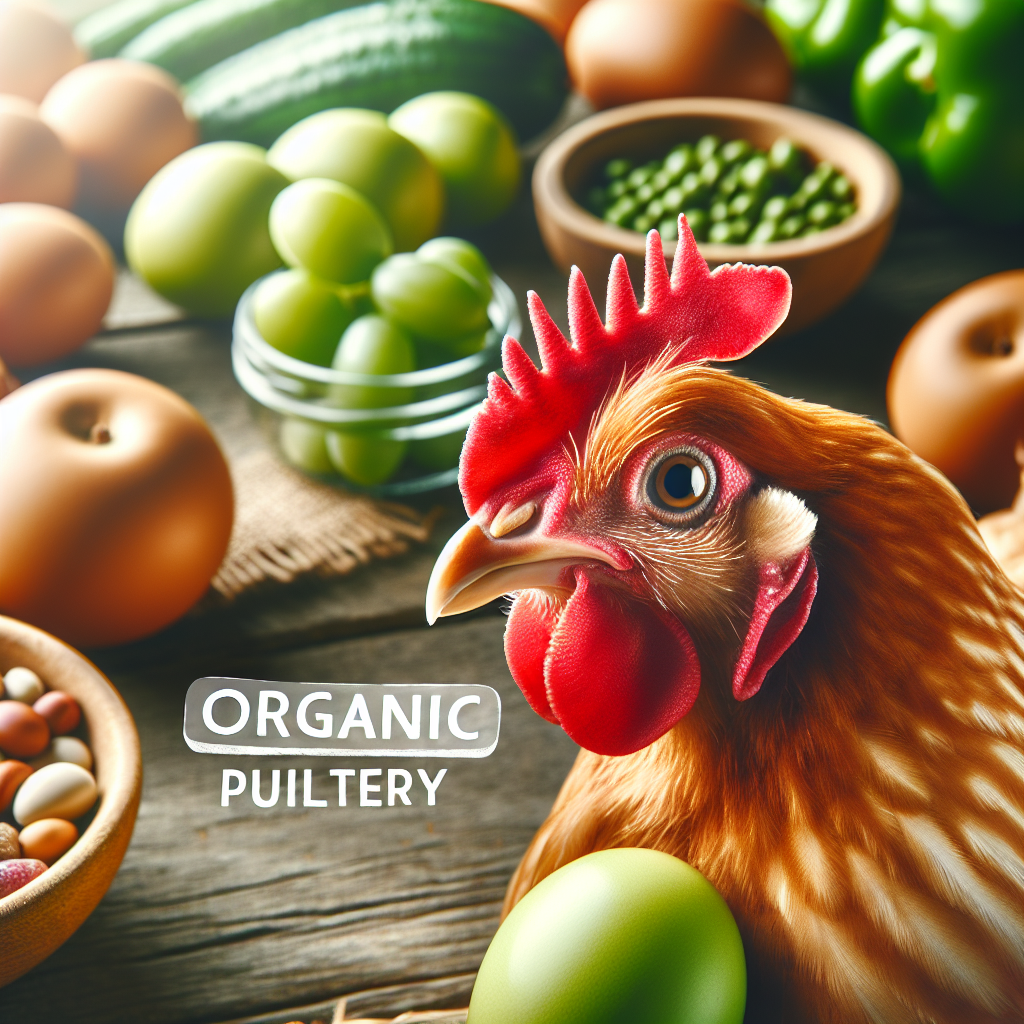Have you ever wondered what consumers really think about organic chicken products? Are you curious about their perceptions and demands in this growing market? Look no further, as this article aims to shed light on the fascinating insights and trends surrounding consumer preferences for organic chicken. From their beliefs about health and sustainability to their expectations of product quality, we delve into the various factors that shape their choices. So, grab a seat and get ready to uncover the interesting world of organic chicken from a consumer’s perspective. Consumer perceptions and demands regarding organic chicken products are multifaceted and driven by various factors such as health concerns, environmental consciousness, and the desire for high-quality food. Understanding these perceptions and demands is crucial for businesses operating in the organic chicken market to effectively meet consumer needs and expectations.
Definition of Organic Chicken
Organic certification standards serve as the foundation for defining organic chicken. These standards are established by regulatory bodies and ensure that organic chicken is produced without the use of synthetic chemicals, antibiotics, or genetically modified organisms (GMOs). Organic chicken is also required to be given organic feed and have access to outdoor areas.
It is important to differentiate between free-range and organic chicken. While free-range chicken refers to birds that have access to outdoor areas, organic chicken goes beyond this requirement by adhering to strict guidelines for feed and the absence of synthetic additives.
Similarly, consumers should be aware that organic chicken and non-GMO chicken are not interchangeable terms. Non-GMO chicken refers to birds that have been raised without genetically modified feed, while organic chicken encompasses a broader range of criteria such as feed quality and farming practices.
Clear and accurate labeling is essential in ensuring that consumers can easily identify and choose organic chicken products. Proper labeling provides transparency and allows consumers to make informed decisions about the products they purchase.
Health Benefits
One of the primary reasons consumers choose organic chicken is the perception that it offers health benefits. By consuming organic chicken, individuals aim to reduce their exposure to synthetic chemicals commonly found in conventional farming practices.
Organic chicken is often perceived to be nutritionally superior, with potentially higher levels of essential nutrients such as vitamins, minerals, and omega-3 fatty acids. This perception stems from the belief that the organic production process enhances the nutrient content of the chicken.
Concerns about antibiotic resistance and allergens also motivate consumers to opt for organic chicken. The limited use of antibiotics in organic farming reduces the risk of antibiotic-resistant bacteria, while the absence of synthetic additives may reduce the likelihood of allergic reactions.
Environmental Concerns
The environmental impact of chicken farming is an increasingly important consideration for consumers. Organic chicken production is often perceived as more sustainable compared to conventional methods.
Organic farming practices prioritize the use of sustainable techniques and avoid synthetic pesticides and herbicides. By opting for organic chicken, consumers hope to support farming methods that contribute to healthier ecosystems and minimize harm to wildlife.
Water and soil conservation are additional environmental concerns associated with conventional chicken farming. Organic chicken production places an emphasis on responsible water usage and soil conservation practices, further appealing to environmentally conscious consumers.
The impact of chicken farming on biodiversity is also a concern. Organic chicken production aims to minimize the negative effects on biodiversity by promoting diverse habitats and reducing the risk of pollution from synthetic chemicals.
Perceived Quality
The perceived quality of organic chicken plays a significant role in consumer perceptions and demands. Consumers often associate organic chicken with characteristics such as superior texture, appearance, and freshness.
The texture of organic chicken is generally deemed to be firmer and more succulent compared to conventionally produced chicken. This perception may be attributed to the chicken’s access to outdoor areas, which allows for increased muscle development and exercise.
Appearance is another important factor influencing perceived quality. Organic chicken is often perceived as having a more vibrant and appealing color compared to conventionally produced chicken. This is believed to be a result of the organic chicken’s diet, which typically includes a higher proportion of natural and plant-based ingredients.
Furthermore, consumers perceive organic chicken as free from artificial additives such as preservatives, flavor enhancers, and artificial coloring. This authentic and natural attribute contributes to the perceived quality and desirability of organic chicken products.
Price Considerations
Price is a significant factor that influences consumer perceptions and demands regarding organic chicken products. The higher cost of production associated with organic chicken leads to a higher retail price compared to conventionally produced chicken.
Consumers must be willing to pay a premium for organic chicken, which can be a barrier for some individuals. Comparisons between the price of organic chicken and conventionally produced chicken highlight the cost disparity, potentially deterring price-sensitive consumers from choosing organic options.
However, consumers who prioritize health, environmental concerns, and quality may perceive that the higher price is justified given the perceived benefits they associate with organic chicken. The perception of value for money thus becomes a crucial consideration in consumer decisions.
Price elasticity also plays a role in consumer perceptions and demands. Some consumers may be willing to purchase organic chicken regardless of price, reflecting a higher price elasticity. Others, however, may be more price-sensitive and may need incentives or lower prices to choose organic chicken products.
Trust and Transparency
Trust and transparency are critical elements in consumer perceptions and demands for organic chicken products. Organic certification bodies play a significant role in building consumer trust by ensuring that organic chicken meets the required standards.
Consumers often place a higher level of trust in small-scale and local organic chicken production due to their perceived commitment to quality and sustainable practices. The geographical proximity allows for a closer connection with farmers and cultivates trust in the production process.
Brand reputation also influences consumer trust. Proficient organic chicken brands with a history of adhering to organic standards and delivering high-quality products are likely to command loyalty and trust from consumers.
Consumer education plays a vital role in fostering trust and transparency. Educating consumers about the organic certification process, farming practices, and the benefits of choosing organic chicken helps build consumer confidence and reinforces their perception of transparency in the industry.
Food Safety
Food safety is a major concern for consumers, and organic chicken is often perceived as a safer option compared to conventionally produced chicken. By choosing organic chicken, consumers aim to reduce the risk of contaminants and minimize exposure to antibiotics and hormones.
The reduced contamination risk in organic chicken can be attributed to the absence of synthetic pesticides, herbicides, and chemical fertilizers. Organic farming practices prioritize natural alternatives that are perceived to be less harmful to human health.
Consumers also perceive organic chicken as having lower levels of antibiotics and hormones. The restricted use of antibiotics in organic farming, coupled with the absence of synthetic hormones, reassures consumers that they are consuming a healthier and safer product.
Proper handling and storage are essential to maintaining food safety. Ensuring that organic chicken is handled and stored in accordance with food safety guidelines minimizes the risk of contamination. Government regulations and testing also contribute to consumer confidence in the safety of organic chicken products.
Taste and Flavor
Taste and flavor are significant considerations for consumers when it comes to organic chicken. Organic chicken is often associated with a natural and clean flavor that is different from conventionally produced chicken.
The flavor of organic chicken can be influenced by various factors, including diet, exercise levels, and farming practices. The organic chicken’s access to outdoor areas and its organic feed contribute to the distinct flavor profile associated with organic chicken.
Consumer preferences also play a role in the perceived taste and flavor of organic chicken. Some consumers may prefer the natural and authentic taste of organic chicken, while others may have acquired a taste for conventionally produced chicken and may find the flavor of organic chicken less appealing.
Preparation and cooking methods can further enhance the taste and flavor of organic chicken. By utilizing culinary techniques, spices, and herbs, consumers can accentuate the natural flavors of organic chicken and create delightful culinary experiences.
Animal Welfare
Concern for animal welfare is a growing consideration for consumers when making purchasing decisions. Organic chicken production is often perceived as more humane and ethical compared to conventional chicken farming.
Organic certification standards prioritize the well-being of chickens, ensuring that they have access to outdoor areas, natural light, and ample space for movement. This increased freedom of movement allows chickens to exhibit their natural behaviors, contributing to their overall welfare.
Consumer demand for organic chicken stems from the perception that these farming practices prioritize the welfare of animals and avoid unnecessary harm or stress. By supporting organic chicken production, consumers express their moral and ethical concerns for animal welfare.
Marketing and Labeling
Marketing and labeling strategies play a crucial role in influencing consumer perceptions and demands for organic chicken products. Certified organic labels, recognized by regulatory bodies, serve as a visual cue for consumers, indicating that the product has met the necessary organic certification standards.
Product claims and messaging also influence consumer perceptions. Clear and informative product claims that highlight the benefits of organic chicken, such as health, environmental, and animal welfare considerations, resonate with consumers and reinforce their perception of organic chicken as a desirable choice.
Customer perception of labels is highly dependent on their understanding and interpretation of organic certification standards. Brands need to effectively communicate the meaning and significance of these labels to build consumer trust and ensure accurate perception.
Brand communication strategies play a vital role in shaping consumer perceptions and demands. Brands that prioritize transparency, educate consumers about organic chicken production, and emphasize their commitment to sustainability and quality are more likely to resonate with consumers and drive demand for their products.
In conclusion, consumer perceptions and demands regarding organic chicken products encompass a wide range of factors such as health benefits, environmental concerns, perceived quality, price considerations, trust and transparency, food safety, taste and flavor preferences, animal welfare, and marketing and labeling strategies. Understanding and addressing these perceptions and demands is essential for businesses seeking to thrive in the organic chicken market and cater to the evolving needs and expectations of consumers.




